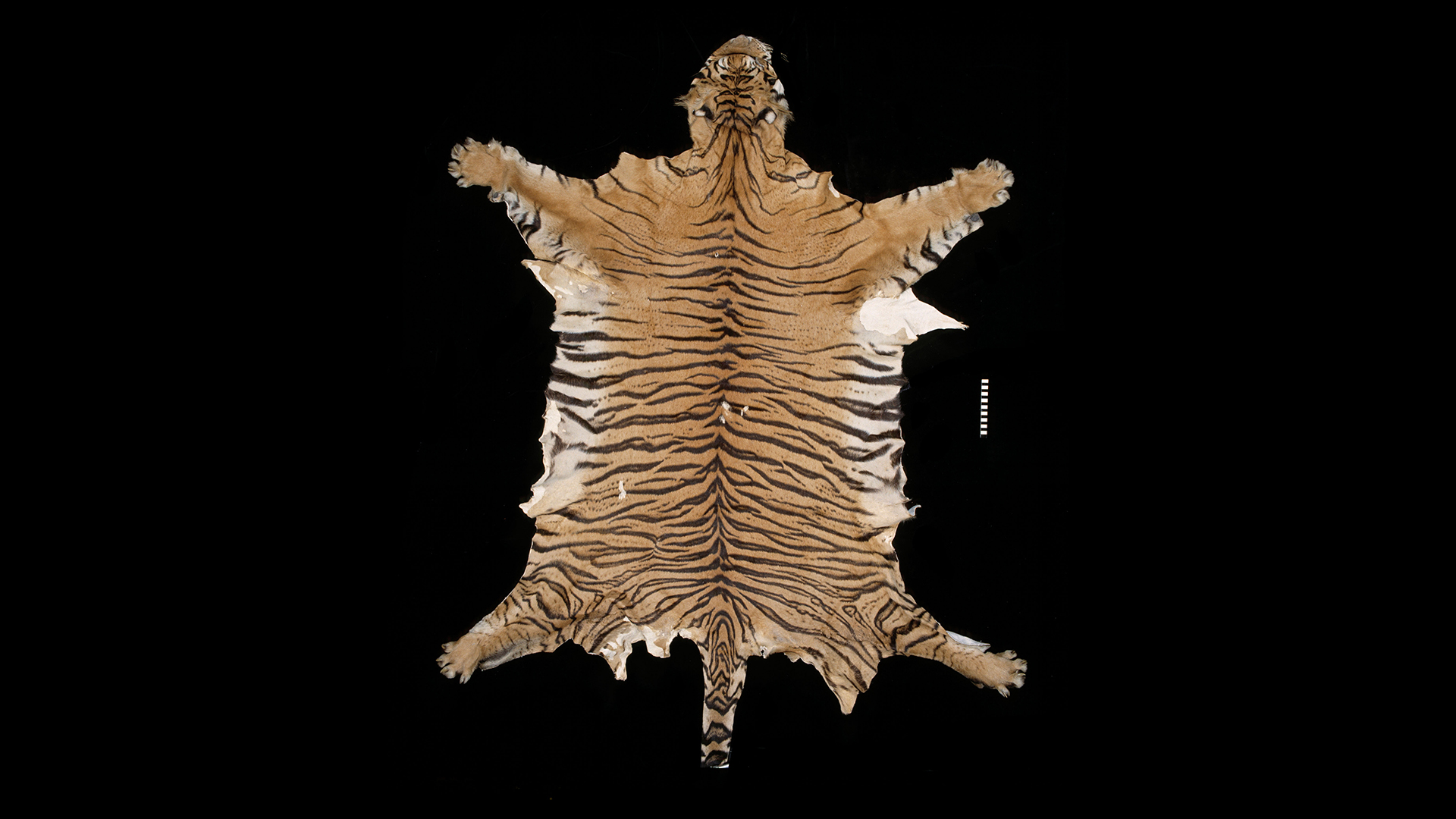
Extinct Javan tigers, which disappeared almost 50 years ago, could still be alive, researchers have claimed. And while their research has come under significant scientific scrutiny, there appears to be some kind of striped big cat prowling the island of Java.
Indonesia was once home to three tiger subspecies: Sumatran tigers (Panthera tigris sumatrae), Javan tigers (P. tigris sondaica), and Bali tigers (P. tigris balica), which lived on the islands of Sumatra, Java and Bali, respectively. The International Union for Conservation of Nature (IUCN) considers both Javan tigers and Bali tigers to be extinct due to hunting and habitat loss, while Sumatran tigers are endangered.
The last confirmed sighting of a Javan tiger was in 1976, but people occasionally report seeing tigers on Java to this day. Recently, the authors of a new study, published March 21 in the journal Oryx, appeared to confirm the creature's continued existence, after analyzing a single strand of hair retrieved from a plantation in West Java.

DNA from the hair closely matched DNA taken from a Javan tiger pelt collected in 1930 and held in a museum, according to the study. However, tiger geneticists have raised concerns about the credibility of the study's findings.
Luo Shu-Jin, an evolutionary geneticist at Peking University in China, told Live Science that her team reanalyzed the DNA sequence data presented in the study and found errors and potential sample contamination.
"The errors may result from various reasons that are impossible to trace based on the information provided by [the study's authors]," Luo said. "Considering the likelihood of contamination during the production of the putative tiger hair sample and the museum Javan tiger specimen, it is inappropriate to use these sequences to conclude the existence of the Javan tiger."
Anubhab Khan, a postdoctoral researcher who studies tiger genetics at the University of Copenhagen in Denmark, also reanalyzed the data. Speaking to The Wall Street Journal (WSJ) last week, he said he couldn't confirm whether the hair came from a tiger based on the study's data. However, he told Live Science he has since collaborated with the study authors to conduct a new analysis.
"I am now confident that the hair is from a tiger; however, we do not have the ability to assign it to subspecies," Khan said. "All we know is that the sample seems to be one of the Sunda land tigers (so could be a Sumatran tiger or a Javan tiger or even a Balinese tiger)."
Live Science reached out to study lead author Wirdateti (who goes by one name) but didn't receive a reply before publication. Wirdateti previously told the WSJ that she was confident the hair came from a Javan tiger.
Related: Gene therapy could be used as birth control for cats, small study suggests
The new research began after Javan resident and conservationist Ripi Yanur Fajar reported seeing a big cat jump between a road and a plantation near the village of Cipeundeuy in the forest of South Sukabumi in August 2019. Researchers visited the site nine days after the alleged sighting and found a hair on a nearby fence, along with potential tiger footprints and claw marks.
After interviewing Fajar in June 2022, the authors stated in the study that they believed the hair came from a Javan tiger. And their DNA analysis carried out the same year appeared to confirm this. But Luo's team found several mistakes.
"We read the article with great excitement, which was, quickly and sadly, replaced by concerns about the credibility of data, and hence, the reliability of the conclusion," Luo said.
Luo explained that the authors didn't compare the same DNA segments across the different sequences.There was also an unusually large number of mismatches between the purported Javan tiger sequences — suggesting data unreliability — and too few quality-control details to rule out the possibility of contamination, Luo said.
That doesn't necessarily mean the hair isn't from a Javan tiger, but that it's hard to know from the study. Luo and team prepared a letter in response to the study, which they posted to the preprint server bioRxiv on April 11.
After Khan shared his skepticism about the new DNA comparisons with the WSJ, he said he generated new data from the DNA extracts with the study authors to confirm the hair is at least from a tiger. This follow-up research is currently unpublished.
Indonesia's environment ministry announced after the study's publication that it is seeking more evidence that Javan tigers are still present. These investigations include camera trapping and further DNA research, Reuters reported.







